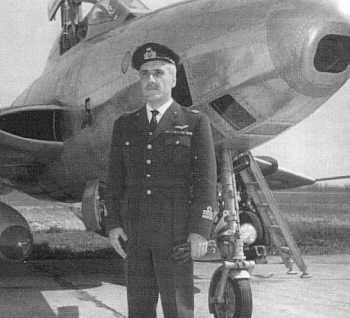
He got the pre-military flying licence in 1934 at the Peretola [Florence] airport, flying a Caproni 100 biplane aircraft. In 1936 he earned the military licence at Grottaglie on a Cr. Asso biplane fighter.
In the first months of 1937 he was assigned to 52nd Stormo, 24thGruppo 362nd Squadriglia where he performed activity on CR.32 till April 1938.
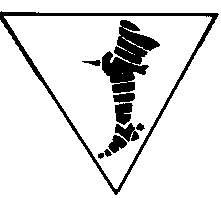
He took part to the Spanish Civil War as a volunteer and during many operations carried out eleven air fightings against the famous Curtiss biplanes and Rata monoplanes. In the beginning he belonged to the "Gamba di Ferro" ("Iron Leg") Squadriglia, led by Tito Falconi (famous acrobat of the upside-down flight) equipped with CR.32s and based at the Escatron airfield. The Gruppo was made by three Squadriglie: 31st 32nd, 33rd, led by Magg. Giuseppe Baylon, it had already been under the command of the legendary Maggiore Ernesto Botto, who, after the amputation of a leg following wounds, recovered and wanted to carry on the flying activity with the same commitment as before.
He was later assigned to the autonomous ground attack Squadriglia "Ocio che te copo" led by Magg. Vossilla and later by Tenente Ido Zanetti, based on the Caspe airfield, where the "Cucaracha" Gruppo led by Tenente Colonnello Tessari was also stationed.
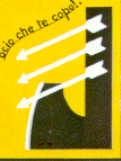 Tenente Zanetti was killed in a strafing run and the command of the Squadriglia was taken over by Cap. Giorgio Iannicelli. The unit had notable successes but personally only shared kills were acknowledged to him.
Tenente Zanetti was killed in a strafing run and the command of the Squadriglia was taken over by Cap. Giorgio Iannicelli. The unit had notable successes but personally only shared kills were acknowledged to him.After about an year, in April 1939, got back to Italy and was committed to the 362nd Squadriglia of 52nd Stormo Caccia which, in the meantime, had been transferred from Ghedi to Ciampino Sud, here went on the activity, essentially acrobatic, with the patrol and the valiant commander Vizzotto. They executed flights of five and nine aircraft, and exercised in all the acrobatic figures in wedge-shaped formation and in single line, and the famous "upwards bomb burst". During one of these in-line, five-aircraft manoeuvres two 'planes collided and crashed to the ground, killing the pilots Torrigiani and Garbellotto. Such activity went on until the outbreak of the war.
At the time of the first operations of the conflict, there was the transfer with the new G.50 aircraft from Ciampino to Sarzana, where activities upon alarm against possible airraids from the French front took place, soon he left this unit to be transferred to Albania and assigned to the Gruppo commanded by Ten. Col. Leotta.
In Albania, on the airfields at Tirana, Berat and Devoli, he took part to the cruise flights and scrambles further than to escort missions to the bombers based in Southern Italy, on the G.50 monoplane fighters; the tiring surveillance flights were performed at a quote of 4/5,000 metres without oxygen and at very low temperatures.
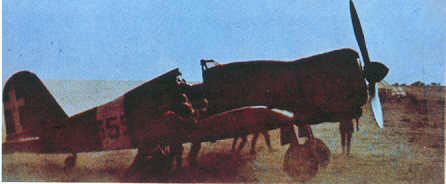 Being not familiar with instrumental flight, he once found himself in clouds with no visibility and spun down in a corcscrew dive, regaining control of the aircraft at a lower height. There were some clashes with PZL monoplanes, Gloster Gladiators and a few Hurricanes that had made their appearance in the final stages of that campaign. In one of these a curious event took place: an aircraft of his unit was attacked from behind by a couple of Gloster which, very quick in manoeuvering, did not allow the G.50 to neutralize the unfavorable position.
Realizing the difficulty, the G.50 threw itself against the two Glosters, which seeing themselves attacked left the prey and broke the contact. But in these moments someone had latched on to his tail, and Bellagambi was hit by a burst of fire and wounded in the left hand. With the engine being about to catching fire for the loss of oil, he had nothing left to do but to glide and land on the frontline, fortunately on our side and near a field hospital where he was tended immediately. He realized that the dorsal parachute had shielded him, stopping with the many layers of silk a bullet bound right into his back! This was the only time that the parachute helped him, because in the whole of his career he never had to bale out.
Being not familiar with instrumental flight, he once found himself in clouds with no visibility and spun down in a corcscrew dive, regaining control of the aircraft at a lower height. There were some clashes with PZL monoplanes, Gloster Gladiators and a few Hurricanes that had made their appearance in the final stages of that campaign. In one of these a curious event took place: an aircraft of his unit was attacked from behind by a couple of Gloster which, very quick in manoeuvering, did not allow the G.50 to neutralize the unfavorable position.
Realizing the difficulty, the G.50 threw itself against the two Glosters, which seeing themselves attacked left the prey and broke the contact. But in these moments someone had latched on to his tail, and Bellagambi was hit by a burst of fire and wounded in the left hand. With the engine being about to catching fire for the loss of oil, he had nothing left to do but to glide and land on the frontline, fortunately on our side and near a field hospital where he was tended immediately. He realized that the dorsal parachute had shielded him, stopping with the many layers of silk a bullet bound right into his back! This was the only time that the parachute helped him, because in the whole of his career he never had to bale out. In late 1941 he was transferred to the Group based in Sardinia at Monserrato, equipped with the CR.42 biplane fighter.
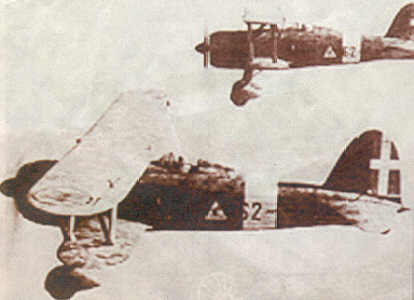 He took part to the escorts to convoys and torpedo bombers in the Channel of Sardinia till over the Tunisian Coast. There were clashes with enemy fighters over the sea in the occasion of takeoffs upon alarm.
He took part to the escorts to convoys and torpedo bombers in the Channel of Sardinia till over the Tunisian Coast. There were clashes with enemy fighters over the sea in the occasion of takeoffs upon alarm.After an intense operational cycle he was transferred to 150th Gruppo Caccia led by Maggiore Vizzotto bound for Northern Africa. The unit, equipped with Macchi 200 airplanes, took part to an intense activity from the airfields at El Agheila, Benghazi and Martouba for interception and surveillance flights, strafing and bomber escort missions. During a strafing run he was wounded in the right leg, an accident of which he had a memory consisting in a small splinter. In this theatre as well he took part to various air fightings in one of which he succeeded in shooting down an enemy aircraft.
Back to Italy with the Gruppo at the beginning of the 1943, he was commanded to Sicily, at Castelvetrano, and the unit was re-equipped with the German Messerschmitt 109 fighters. Finally they had aircraft created for war: very fast, manoeuverable, powerfully armed and equipped with an excellent radio for the necessary links. In a position almost exclusively defensive he took part to free hunt missions, interception flights, bomber escorts and scrambles.
It was a very hard operational cycle in which there were contacts with British and US fighters, among which appeared the famous P51 Mustang and P47 Thunderbolt. In occasion of air fightings in the skies over Sicily, Pantelleria, and Malta he was credited with some shootdowns of enemy aircraft in collaboration with the other pilots of the Unit.
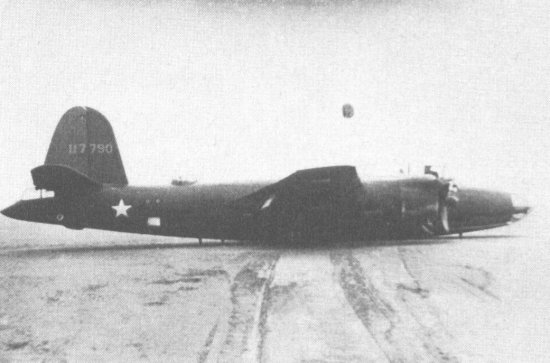
After the 8th of September 1943 he joined the Aeronautica Nazionale Repubblicana, and was part of the II Gruppo Caccia, under the command of Col. Vizzotto at the Bresso airfield near Milan, and in late 1943 he started tro fly again, almost without interruption, exploiting the availability of some G.55, Reggiane 2000 and Macchi 202. But in March 1944, the Gruppo became officially operating under the command of Ten. Col. Aldo Alessandrini, which included three Squadriglie: the 1st, "Gigi Tre Osei" led by Ten. Ugo Drago, the 2nd "Diavoli Rossi" ("Red Devils") led by Capt. Mario Bellagambi and the 3rd "Gamba di Ferro" ("Iron Leg"), led by Capt. Guido Luccardi. The Gruppo, after a brief activity with G.55s, was equipped with Messerschmitt 109G aircraft at the Cascina Vaga airfield. Later it operated from Villafranca, Aviano, Osoppo, and alternatively from Ghedi, Lonate Pozzolo (Varese) and Thiene (Vicenza).
The Unit ended its activity with the transfer from Aviano to to Villafranca and Orio al Serio: on the eve of the 25th of April it was caught by the end of the war. Personally, in this period comprising 45 air combats, he was officially credited with 14 "kills" on aircraft such as Boeing B17, B25 Mitchell, B26 Marauder, P51 Mustang, P47 Thunderbolt and Spitfire.
After a four-years long interval he was taken back into service and, with the rank of Capitano, sent on the I of October 1949 to the Air War School in Florence for the course for the promotion to senior officer. When he ended it, on 15th March 1949, he was committed to the 51st Stormo Caccia at Treviso-San Giuseppe airfield, which he reached after taking up flying again at the Grottaglie Flight School on P51s and G.59s [Merlin-engined G.55]. In the 51st Stormo he was active on P47s until the end of 1952, at the arrival of the first F84G jets on which he sustained an intense flying activity as commander of the 20th Gruppo after the passage on to such aircraft which took place at the Aviano NATO airbase with the technical assistance of US officers.
![P47s of 51░ Stormo [Photo credit Fam. Biccolini via N. Malizia]](thunder3.jpg) He was later appointed the command the 51st Aerobrigata, thus receiving the new F84G and soon after he was charged with the foundation of the national aerobatic team "GUIZZO" ["flicker"] participating to the opening of the new Istrana air base on 20th June 1954.
He was later appointed the command the 51st Aerobrigata, thus receiving the new F84G and soon after he was charged with the foundation of the national aerobatic team "GUIZZO" ["flicker"] participating to the opening of the new Istrana air base on 20th June 1954. Transferred on 14th September 1956 to the 3rd Aerobrigata Recon Fighters, he flew RF84Fs and was also Chief of the Operational Office and Unit Commander until November 1958. During such period he took part to the 22nd Course for senior officers at the Air War School in Florence for the promotion to Colonnello.
On 10th November 1958 he was assigned to the 56th Tactical Air Force as Chief of the 3rd Technical and Logistical Unit. At the end of 1959 he came back to the 51st Aerobrigata at Istrana, later taking over the command of the Aerobrigata and of the Istrana and Treviso airfield. The latter was seat of the 2nd Gruppo Caccia on Fiat G.91 aircraft. In this period he operated F86K all-weather aircraft in night/day flights and marginally G.91s also.
After one year at Martina Franca as supervisor of radar/ground apparatuses distributed in Apulia and Sicily, he was sent to Tokio as Military Attach´┐Ż at the Italian Embassy for the Italian Armed Forces, and accredited for Japan, South Korea and Philippines. Such assignment ceased in November 1967 and a short while later he was put in the reserve with the rank of Generale di Brigata Aerea (Air Vice Marshall).
Many months have gone since his demise, and I did not read any line that remembered him; as a former member of the 20th Gruppo Caccia I am grateful to Mrs. Marisa Bellagambi who provided me with the starting point for this article, and gave to the room devoted to the A.N.R. at San Pelagio Castle the collection of medals, the sword and other memorabilia that belonged to the General her husband.
Franco Benetti (From Ala Tricolore July-October 2002)
BACK TO INDEX